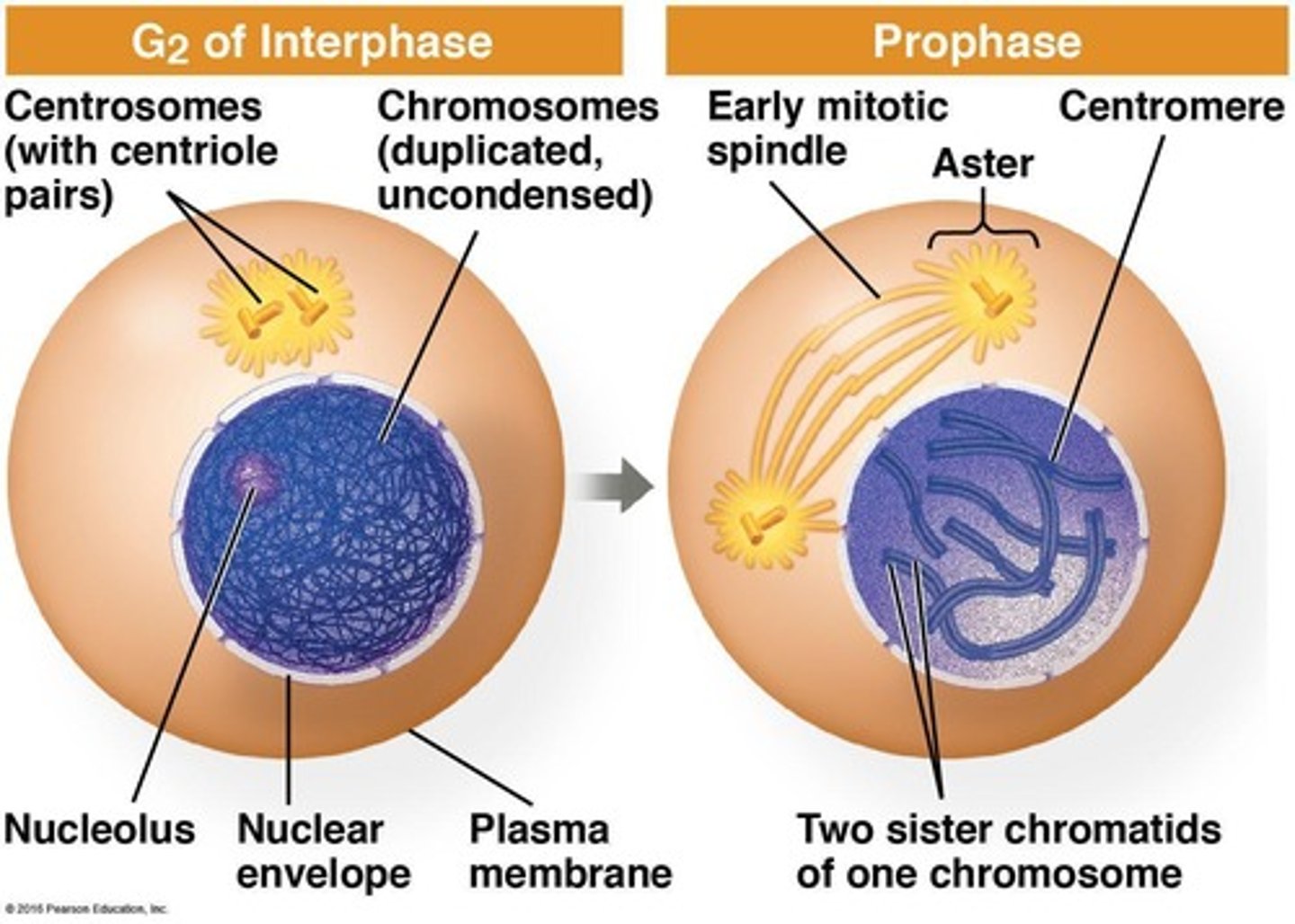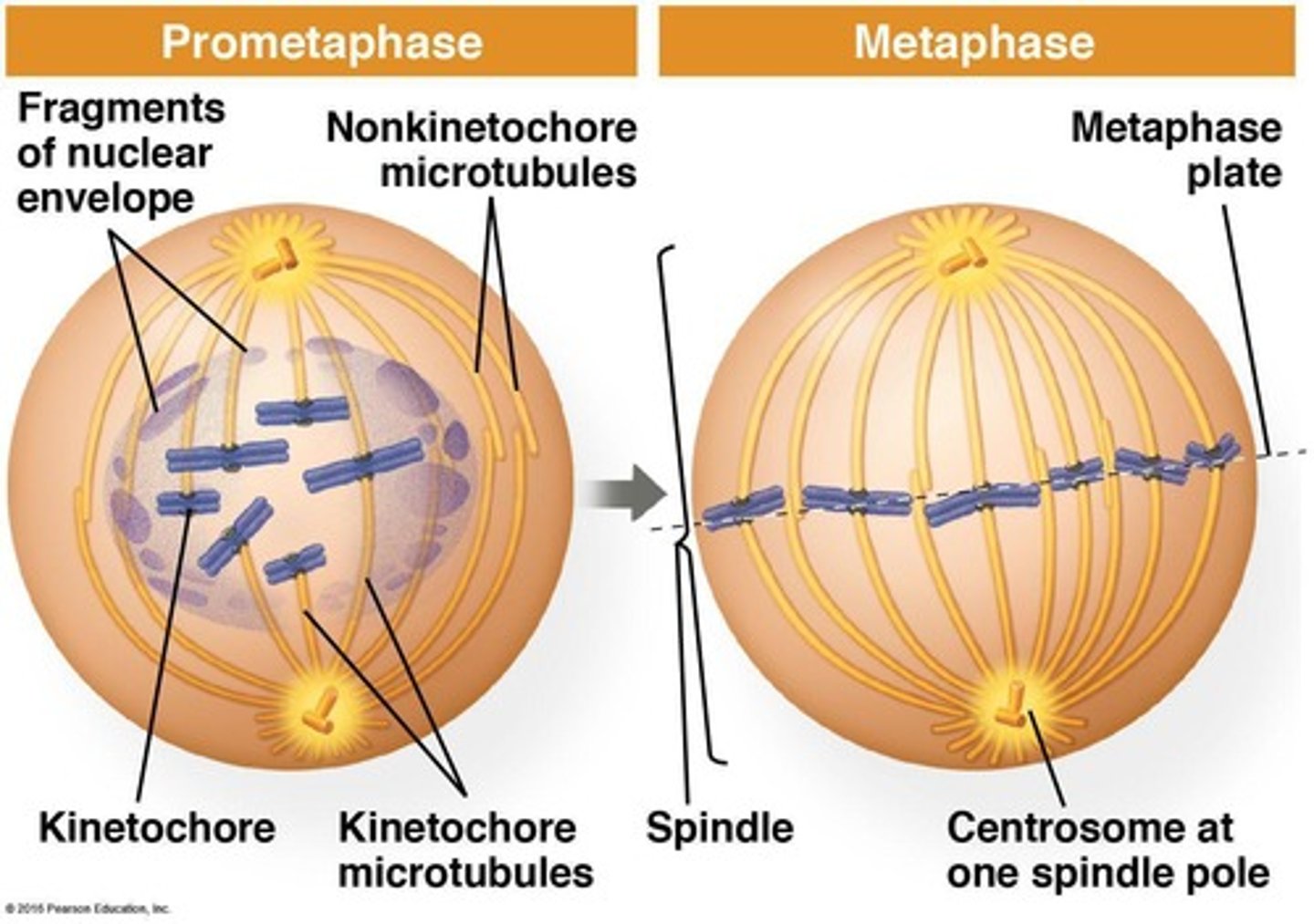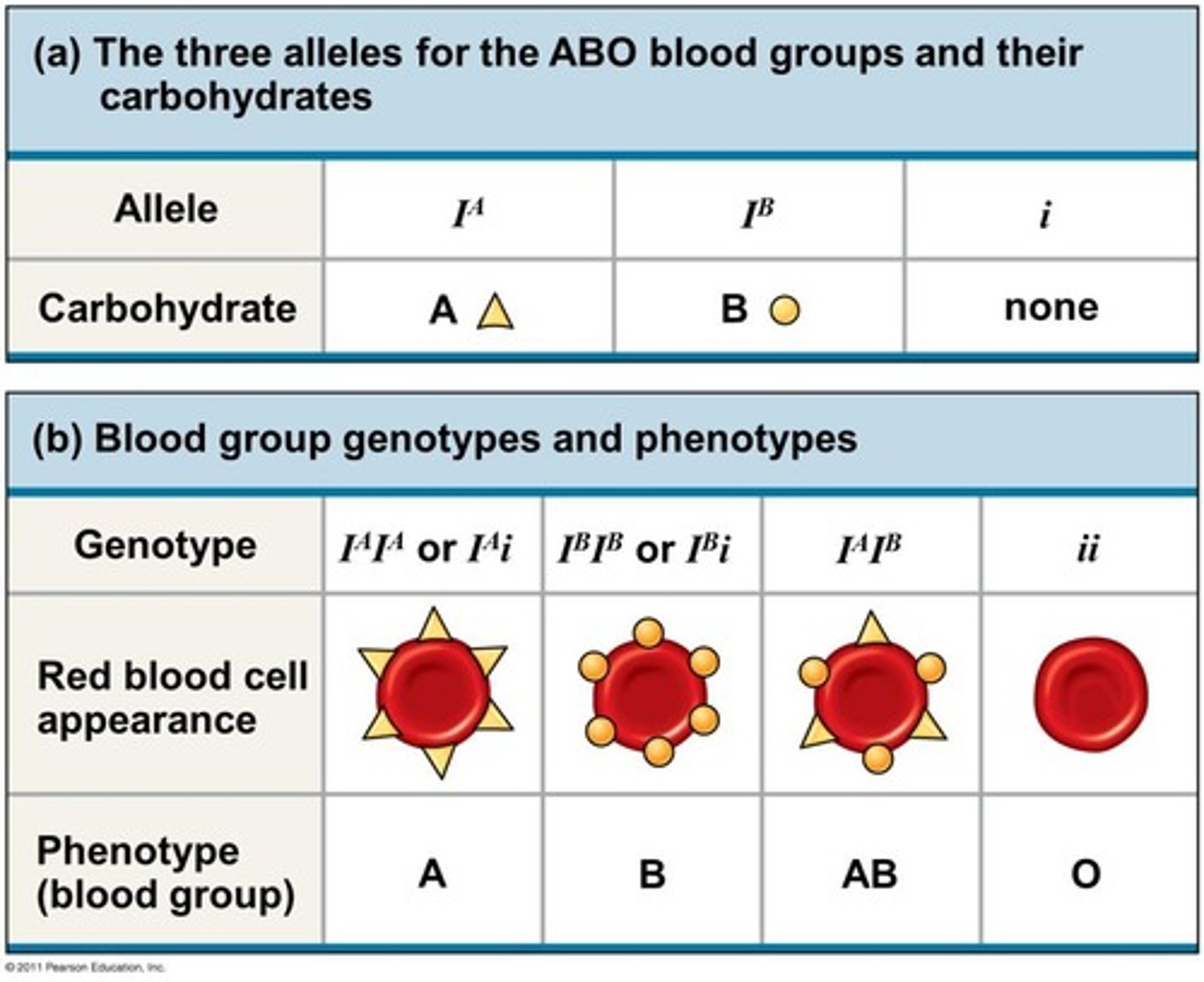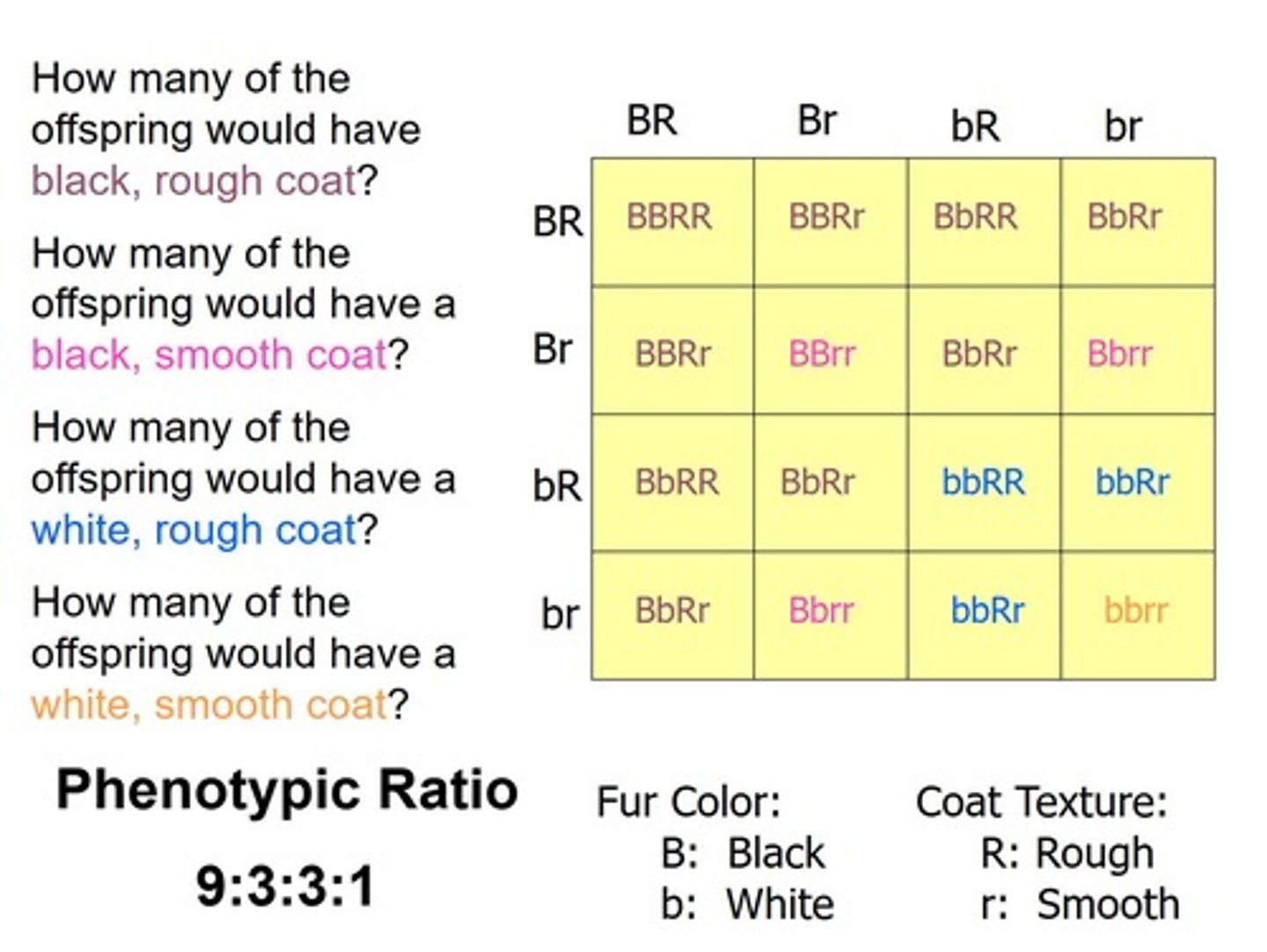Honors Biology Final Study Guide - Unit 4
1/96
There's no tags or description
Looks like no tags are added yet.
Name | Mastery | Learn | Test | Matching | Spaced |
|---|
No study sessions yet.
97 Terms
Cell Cycle
life of a cell from its formation until it divides into two cells
Functions of Cell Division
Reproduction, Growth, and Tissue Repair
Duplicated chromosome
2 sister chromatids attached by a centromere
Somatic Cells
Body Cells
Diploid (2n)
2 of each type of chromosome
Mitosis
Divide by mitosis
Humans: 2n
46
Gametes
Sex cells (sperm/egg)
Haploid (n)
1 of each type of chromosome
Meiosis
Divide by meiosis
Humans: n
23
Phases of the Cell Cycle
The mitotic phase alternates with interphase: G1 → S → G2 → mitosis → cytokinesis
Interphase
90% of cell cycle
G1 Phase
cell grows and carries out normal functions - production of proteins needed for DNA replication
S Phase
duplicates chromosomes (DNA replication); after DNA replication, each chromosome consists of two identical sister chromatids attached at the centromere.
G2 Phase
prepares for cell division; makes proteins needed for cell division
M Phase (mitotic)
Mitosis: nucleus divides; Cytokinesis: cytoplasm divides

Steps of Mitosis
Prophase → Metaphase → Anaphase → Telophase

G0 Phase
the "resting" phase of the cell cycle. A cell enters G0 when it is not needed to divide and may enter G0 due to various factors like cellular signals or environmental cues.
G1 Checkpoint
This checkpoint occurs near the end of the G1 phase and checks overall cell conditions. If conditions are good, the cell is signaled to move on to the S phase (DNA replication).
G2 Checkpoint
This checkpoint occurs between the G2 cycle and mitosis and checks proper DNA replication. If DNA replication is complete, the cell will move on to mitosis.
M-spindle (Metaphase) checkpoint
This checkpoint occurs during metaphase of mitosis and checks for proper attachment of spindle fibers to all chromosomes at the centromere.

Homologous chromosomes
a pair of chromosomes in a diploid organism that carry the same genes and are inherited from different parents
Crossing over
occurs during prophase I during meiosis I. Its primary purpose is to exchange genetic material between homologous chromosomes.
Meiosis result
A cell divides twice during meiosis, resulting in 4 daughter cells with ½ the number of chromosomes.
Example of Haploid
if the diploid number in a liver cell of an organism is 52, then there would be 26 chromosomes in the egg of this organism, as an egg cell is haploid and contains ½ the number of chromosomes as a diploid cell.
Chromosome
a thread-like structure found in the nucleus of a cell, composed of tightly-coiled DNA and proteins
Gene
segment of DNA with information to direct the synthesis of a specific protein
Genome
all of the genetic information (DNA) in the cell
Characteristic
A heritable feature that varies among individuals (e.g., hair color)
Trait
Each variant for a characteristic (e.g., brown or red for hair color)
Locus
a gene's position on a chromosome
Allele
an alternative form of a gene found at a specific location (locus) on a chromosome
Genotype
DNA sequence contained in a gene (alleles)
Phenotype
the observable characteristics of an organism (includes visible features, chemical, and behavioral characteristics)
Gregor Mendel
a very important figure for establishing the development of genetics and inheritance
P generation
parental generation (true) breeding
F1 generation
the hybrid offspring of the P generation
F2 generation
produced when F1 individuals breed
Dominant allele
determines the organism's appearance, represented by a capital letter (A)
Recessive allele
has no noticeable effect on appearance, represented by a lower case letter (a)
Homozygous
two alleles at a particular locus are identical (e.g., BB or bb)
Heterozygous
two alleles at a locus may differ (e.g., Bb)
Punnett Square
a diagram that shows the possible combinations of sperm & egg
Complete Dominance
One allele (dominant) determines the phenotype & the effects of the other allele (recessive) are not seen in the phenotype.
Example of Complete Dominance
An individual with one allele for freckles will have freckles.
Example of Recessive Allele
Only someone with two recessive alleles will have albinism (no melanin).
Incomplete Dominance
Heterozygous alleles produce a phenotype that is distinct from individuals who are homozygous for one allele or the other.
Example of Incomplete Dominance
Flower color in the snapdragon: RR = red, rr = white, Rr = pink.
Codominance
Neither allele is dominant to the other; the phenotype of an individual who is heterozygous exhibits a combination of both fully expressed traits.
Example of Codominance
Cattle with red coats (R1R1), cattle with white coats (R2R2), and cattle that have a patchy red & white (R1R2).
Example of Human Codominance
Humans with A and B alleles (AB) have type AB blood.
Multiple Allelism
Occurs when there are more than two alleles of a gene in the population.
Example of Multiple Allelism
The ABO blood system has three alleles of blood-groups: IA (or A), IB (or B), i (or O).

Sex-Linked Inheritance
Genes located on the X or Y chromosome are called sex-linked genes.
Sex Chromosomes
Males have XY chromosomes, while females have XX chromosomes.
Inheritance of Sex Chromosomes
Mothers can only contribute an X chromosome, while fathers can contribute an X or a Y chromosome.
X-linked genes
Genes located on the X chromosome.
Inheritance of X-linked genes in males
Males only inherit X-linked genes from their mother.
Inheritance of X-linked genes in females
Females inherit X-linked genes from both mother and father.
X chromosome functions
Carries genes that affect many somatic (non-sex) structures.
Expression of X-linked genes in males
Males will always express the X-linked gene, regardless of whether it is dominant or recessive.
Females' genotypes for X-linked genes
Females may be homozygous dominant, homozygous recessive, or heterozygous.
Example of X-linked inheritance
Color blindness.
Dominant allele for color vision
Dominant allele on X chromosome (N) results in normal color vision.
Recessive allele for color vision
Recessive allele on X chromosome (n) results in red-green color blindness.
Female genotypes for color vision
XNXN or XNxn result in normal vision; xnxn results in red-green color blindness.
Male genotypes for color vision
XNY results in normal vision; xnY results in red-green color blindness.
X-linked diseases
Diseases caused by a mutant allele on the X chromosome, most often X-linked recessive.
Carriers of X-linked diseases
Females are usually carriers with one normal and one mutant allele, typically not affected phenotypically.
Affected females in X-linked diseases
A female may be affected if she has two copies of the mutant allele.
Prevalence of X-linked diseases
X-linked diseases are found more often in males than females.
Turner's Syndrome
Disorder associated with a single X chromosome (X).
Triple X Disease
Disorder associated with three X chromosomes (XXX).
Klinefelter's Syndrome
Disorder associated with an extra X chromosome in males (XXY).
Jacob's Syndrome
Disorder associated with an extra Y chromosome (XYY).
Edward's Syndrome
Disorder associated with Trisomy 18.
Down's Syndrome
Disorder associated with Trisomy 21.
Patau Syndrome
Disorder associated with Trisomy 13.
Pedigree Charts
Flow charts that display the patterns of genetic traits within a family.
Determining trait inheritance
Can determine whether a trait is dominant, recessive, or sex-linked.
Symbols in pedigree charts
Circle is a female, square is a male; shaded symbols show affected individuals.
Generational numbering in pedigrees
Generations are numbered I, II, III, etc.
Birth order in pedigrees
Individuals are shown in birth order.
Dominant trait inheritance
If two parents are affected (heterozygous), they may produce normal offspring.
Recessive trait inheritance
If two parents are normal (heterozygous), then they may produce affected offspring.
Sex-linked trait inheritance
Males are mostly affected; look for female carriers.
Analyzing a pedigree for recessive disorders
Pedigree shows affected individuals that come from unaffected parents.
Analyzing a pedigree for sex-linked disorders
Large number of affected individuals in one gender only (mostly males).

Dihybrid Cross
A cross that shows the possible offspring for two traits.
Gametes in a dihybrid cross
For a dihybrid cross of BbRR x BbRr, possible gametes could include: BR, Br, bR, and br.
Punnett Square for dihybrid cross
Contains 16 spaces.
Phenotype Ratio for dihybrid cross example
9:3:3:1.

Epistasis
The effect of a gene (gene B) is dependent on the presence or absence of mutations in another gene (gene E).
Modifier gene
Termed for a gene that affects the expression of another gene.
Phenotype ratio due to epistasis
Would be 9:4:3; not the 9:3:3:1 in a 'normal' dihybrid cross.
Variation due to epistasis
Results from the interaction between genes affecting phenotype.